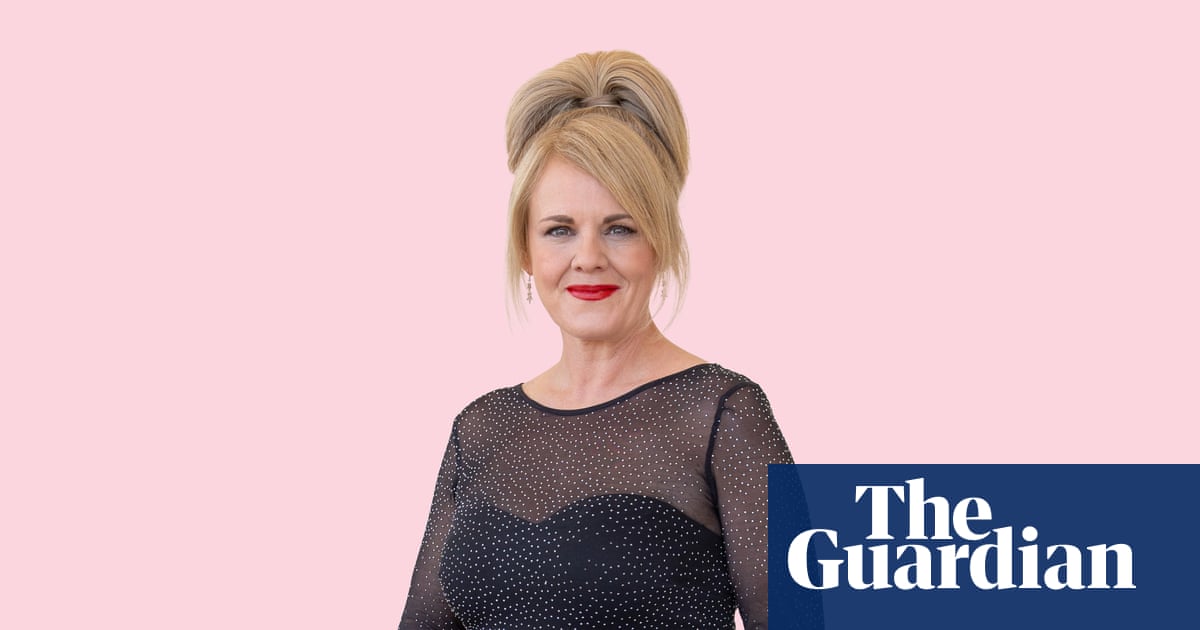Earlier this year, Angela Maddamma, 72, loaded all her belongings into her car. She drove from a house in suburban Richmond, Virginia, where she had lived for 20 years, to her new life about five hours west, in a senior cohousing project called ElderSpirit.
Cohousing communities are “thoughtfully designed neighborhoods with private homes” arranged around common areas, where people may gather and build relationships with their neighbors, according to the Cohousing Company design firm. Cohousing is typically multigenerational – of the roughly 170 total cohousing units in the US, most are home to people of all ages, from young families to seniors. But about 12 are senior-specific.
After retiring last fall, Maddamma came across the concept of senior cohousing online. She liked the sound of ElderSpirit, a collective of 29 individual units and a common house surrounded by garden paths, which was near enough to visit.
What she saw was not – as her friends and family asked afterward – some kind of cult or commune. “It’s your average 55 and older community, where you’re living independently” in a rented or purchased unit, Maddamma says. But the members share a “foundation of what’s important to us in our senior years, and here, it’s mutual support” plus other values like environmental care and a broad interest in spirituality and the “mysteries of ageing”.
“I realized that I spent a good part of my adult life searching for community,” Maddamma says.
When Maddamma lived in the suburbs, she waved at neighbors as she came and went to work. But she didn’t meet many people. “I had to search. I joined various clubs; I started a book club,” she says. That helped, but it didn’t create the proximate, tight-knit community she was really looking for – where people might spontaneously pop by to say hello, or you could bump into a friend while going about your day.
By contrast, the evening she arrived at ElderSpirit, the sun was setting, her porch light was on and neighbors were waiting to welcome her with dinner. If she was tired, she should turn off the porch light, they told her; otherwise, people would see it and keep stopping by to greet her all evening. “That’s the kind of community it is,” says Maddamma.
Now when I ask Maddamma if her social needs are being met, she replies: “Heck yes.” The day we spoke, she walked the Virginia Creeper Trail with a friend, met with other volunteers from the ElderSpirit membership committee and finished a book. She still has plenty of time to “veg out” undisturbed at home, which is important to her, she says.
For the growing number of people seeking out or forming dedicated senior cohousing communities, such configurations offer a joyful and fulfilling experience of ageing. It’s “a vastly superior way to live”, says Maddamma, compared with alternatives such as moving into a retirement home or ageing in place – which means staying in your own home rather than moving to a facility or nursing home. The latter can end up being isolating, especially for seniors who live alone and lack nearby support.

Margaret Critchlow, 78, began thinking about starting a cohousing project while helping put her own mother in care around 2010. She realized she couldn’t afford an institutional retirement home herself, and, moreover, didn’t want to be in one. One major issue was the unreliable standards of care. Furthermore, institutions “take away the ability to decide what your day is going to look like”, offering scheduled activities (“bingo at 2 o’clock”) and mealtimes that reduce individual agency, Critchlow says.
An anthropologist, Critchlow has taught courses about cohousing at York University in Toronto, and considers a village-like arrangement the ideal way to “do everything from growing up to raising children to growing old”.
So Critchlow set out to find land in the oceanfront town of Sooke, British Columbia, Canada, where she had been taking a sabbatical, and embarked on a first-hand education in cohousing development. She began collecting a group of friends and like-minded individuals who envisioned the same ideals. These covered logistics (separate dwellings, strata titling, decisions by consensus) and ideology (mutual support, honoring privacy while facilitating friendly socialization). Harbourside Cohousing opened in 2016, a community of 51 people living on a 3-acre plot of land in a 12-unit configuration, with communal spaces including a wharf with a cute gazebo.
Critchlow helped write a research guide to assist others with cohousing dreams. While developing her approach to cohousing, she read the 2005 Senior Cohousing Handbook, by the Nevada-based author and architect Charles Durrett.
Durrett, 70, is a pioneer of American cohousing, and has helped develop over 55 of the US’s cohousing projects. He first became interested in the topic when he walked past a cohousing community on his way to school at the University of Copenhagen in 1980. Having grown up in a California town of 325 people, he feels that living in and serving community is “ennobling at a very basic level”.
Denmark is an international leader in the cohousing movement. The practice began catching on in the country in the 60s. It gained momentum thanks to early success stories and news articles such as Bodil Graae’s Children Should Have One Hundred Parents (1967) and Jan Gudmand-Høyer’s The Missing Link Between Utopia and the Dated One-Family House (1968), which presented visions for supportive living environments. The Danish government and financial institutions supported the concept with favorable zoning laws and financing options, and cohousing developed into a fairly well-established living arrangement.

According to a 2024 Danish survey, 80,000 of the country’s seniors are planning to move into cohousing within the next five years, making it the majority choice over alternative housing options such as a house, condo or assisted care.
To Durrett, who lives in a Nevada-based cohousing community he helped create, the challenges of popularizing cohousing include the fact that over the last century Americans have grown steadily more socially isolated, developing a culture of independence that can veer cynical. “What if I don’t get along with people?” is a common worry, Durrett says. “Well, you’re not gonna get along with everybody, but if we do this right, you’re gonna have five or six best friends living next door.”
after newsletter promotion
There’s also little awareness of cohousing itself. “Sadly, in the US most seniors, by a huge margin, have no idea what senior cohousing is,” says Durrett. “They think they’re going to age in place, but they end up in a nursing home.”
Cohousing projects may choose to employ senior caregivers or health aides, but they are not care facilities. Residents at ElderSpirit and Harbourside explained to me that should they develop a disease requiring full-time care, such as Alzheimer’s, they would move into a facility.
But for many other challenges that arise with age, other older people can help.
“Contrary to what society may believe, older people are really quite competent,” says Dr Anne P Glass, a retired gerontologist and researcher of self-directed communities for older adults. Given proximity and familiarity, ”most older people can help each other, and that’s a source of support that hasn’t been recognized very well”.
To Glass, seniors themselves are an untapped resource in easing the looming eldercare crisis. America’s 65-plus population is surging toward 82 million by 2050 – a 47% jump from 2022 levels. Meanwhile, the number of doctors specializing in senior care is declining, and care homes are turning away residents due to staffing shortages: a 2024 survey by the American Health Care Association found 72% of more than 400 nursing homes had fewer staff than before the pandemic due to burnout and wage stagnation.
“The care crisis in our whole country is just going to get worse,” says Glass. “That’s not even getting into the fact that most older people haven’t saved money to pay for their long-term care.”
Nadthachai Kongkhajornkidsuk, a 28-year-old architectural designer who works with Durrett and lives in the same Nevada cohousing project, believes financial accessibility is key to expanding cohousing and boosting racial diversity. Currently, many such projects are predominantly white. Some projects involve the Community Land Trust, a non-profit organization that owns land on behalf of communities, “to keep the land the housing is built on affordable in perpetuity”, Kongkhajornkidsuk says. Other communities prioritize financial and racial diversity in their core values. For instance, ElderSpirit has a progressive ownership plan and allocates some homes for lower-income people, and its mission statement lists diversity as a core value.
Increasing opportunities for cohousing would mean more people could live, and die, among people who care about them.
Over the decades that Glass has worked as a social researcher, many have confided their loneliness to her. “I’ve had people say, ‘I was afraid I would die in my apartment one day and nobody would know,’ which is a very real thing. It happens probably every day in the US,” she says.
At Harbourside Cohousing, one of Critchlow’s neighbors recently chose to die by medically assisted suicide in her home, and in the days before, members of her family and community came by “so she could say how much each of us had meant to her”, says Critchlow.
“And there was joyfulness, because we could see that this was what she wanted”: to be surrounded by friends until the very end.

 4 months ago
70
4 months ago
70








 English (US) ·
English (US) ·